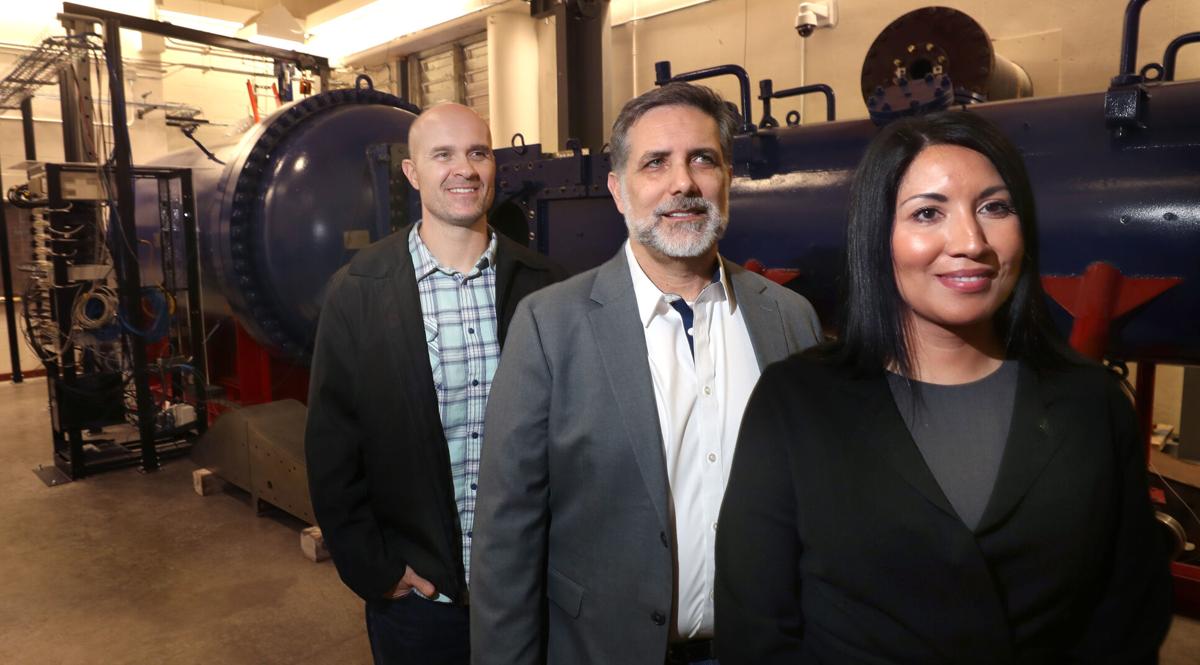It’s one thing to build a hypersonic missile that will fly more than five times the speed of sound.
Making it fly exactly where and when you want is perhaps a bigger challenge.
Now, University of Arizona scientists will lead an effort to solve that problem, under a Pentagon contract to study the use of artificial intelligence to improve the navigation and guidance of hypersonic aircraft, which travel at speeds of Mach 5 and higher.
In early December, UA Systems and Industrial Engineering Professor Roberto Furfaro was awarded a three-year, $4.5 million contract to lead the development of improved guidance, navigation and control systems for “autonomous vehicles operating at hypersonic speeds.”
The three-year proposed research is sponsored by the Pentagon’s Joint Hypersonic Transition Office through the University Consortium for Applied Hypersonics, which the UA joined at its inception in 2020.
The Pentagon and defense contractors, including Tucson-based Raytheon Missiles & Defense, are working to quickly field both defensive and offensive hypersonic missiles to meet a threat posed by rapid hypersonic development programs by Russia and China.
In response, the UA has beefed up its hypersonics research labs in recent years, including a major expansion of its wind-tunnel labs funded by the university and $10 million in federal and state grants.
While the UA’s newest hypersonic and supersonic wind tunnels reside at the College of Aerospace and Mechanical engineering, Furfaro will lead a cross-campus, cross-disciplinary team to develop better hypersonic navigation and control systems.
Off-campus collaborators include researchers from the University of Texas-Austin and Raytheon, which has contributed to UA hypersonics research for years.
‘Nonlinear’ flight
Furfaro, the project’s principal investigator, said the UA team will work to characterize the “nonlinear” — essentially, unpredictable — nature of flight at hypersonic speeds.
“Many conventional systems are designed using linear theory and are not designed to fly or intercept at that speed,” Furfaro said. “There are a lot of things happening in hypersonic flow that are so nonlinear that they are not fully understood, that we need to characterize if we want to design systems that work under these conditions.”
The researchers will use data gathered from computer simulations and wind-tunnel tests about how vehicles behave in hypersonic flow to create a simulated environment for training the adaptive “brain” of the system.
To train hypersonic systems to navigate and react to extremely complex, high-speed situations on their own, the UA team is using a type of machine learning called meta-reinforcement learning.
“With meta learning, we can train it not only on one scenario, but on many scenarios,” Furfaro said. “The system is able to learn over a distribution environment, and every time it converges faster to the next one. By enabling this continuous learning, we are basically able to have a system that continually adapts.”
Furfaro said he’s unable to talk about specific experiments the project will entail, due to Defense Department security requirements for hypersonic programs, much of which remains classified.
Cross-campus project
Scientists across the UA campus will collaborate on the research project, including UA alumnus Brian Gaudet, research engineer in the university’s Space Systems Engineering Laboratory; aerospace and mechanical engineering professor Samy Missoum, who is working on Department of Defense-funded work to characterize hypersonic environments; and materials-science and engineering associate professor Erica Corral.
Furfaro will also work with aerospace and mechanical engineering faculty members Alex Craig and Jesse Little, who work in experimental aerodynamics and run the UA’s wind-tunnel labs, and assistant professor Kyle Hanquist, who specializes in computational fluid dynamics.
“We built these facilities for these types of projects,” said Little, who as director of the Turbulence and Flow Control Laboratory led an effort to upgrade the facility’s supersonic wind tunnel. “They are for large laboratory projects, multiple users, involving government, industry and people involved in different disciplines.”
Little noted that the UA’s investments in his lab’s wind-tunnel facility and supersonic and hypersonic wind tunnels in the nearby Boundary-Layer Stability and Transition Laboratory are paying off.
The UA spent more than $3 million to build and upgrade its wind tunnels several years ago before it was awarded $6.5 million in federal funding and $3.5 million in state funding in late 2021.
‘If you build it ...’
With the help of a Defense Department grant, the supersonic wind tunnel in the Turbulence and Flow Control Laboratory was upgraded to extend its operating range up to Mach 5 and down to transonic and subsonic speeds to create a “polysonic” wind tunnel.
“This facility is just now starting to run, and we’re already booking out a lot of work,” Little said. “It was an ‘if you build it, they will come’ situation, and now they’re coming.”
UA officials including College of Engineering Dean David Hahn called Furfaro’s contract award “a big win” for the school’s hypersonics program.
Wes Kremer, president of Raytheon Missiles & Defense, said the company — the Tucson region’s biggest employer with more than 13,000 local workers — is “incredibly supportive” of the UA’s work in hypersonics.
“The advancements Professor Furfaro and his team will make to guidance, navigation and control systems will directly impact our nation’s ability to develop advanced hypersonic capabilities,” Kremer said in prepared remarks with the UA’s contract announcement.
The UA’s Corral, who serves as the co-director of industrial and national lab engagement and workforce development for University Consortium for Applied Hypersonics‘s Consortium Engagement Board, said the project is part of a series of challenges the Pentagon has issued to solve the technical problems of hypersonic flight.
“There’s a whole vision behind these challenge projects to help enable the warfighter with critical technologies in hypersonics,” she said. “It’s a very important project for the government and that fact the UA has all the technical expertise to execute it, along with Raytheon and UT-Austin — it’s significant.”
Major wind-tunnel upgrades will vault the University of Arizona into the top level of U.S. schools for aerodynamics research.





